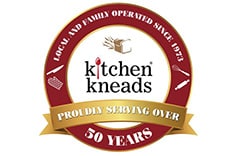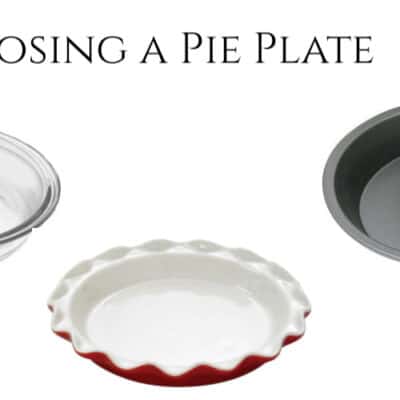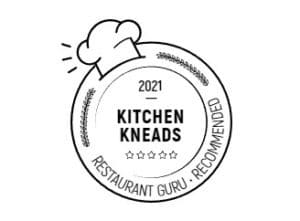There are three most common materials used to make pie plates: tempered glass, ceramic, and metal. I’m going to talk about the pros and cons of each, but ultimately it’s up to you to decide which one works best for you.
Tempered Glass:
Glass pie plates are the most commonly used among bakers. They’re inexpensive and easy to find.
PROS:
- Inexpensive, easy to find, and nonreactive.
- Glass heats at a slow, steady, and even pace. This promotes consistent baking and browning.
- Because they’re clear, radiant heat passes through the pan, helping the crust bake faster and darker.
- You can see the color of the crust through the pan.
CONS:
- Because glass is more slippery than metal, crusts (especially blind baked) can shrink more in a glass plate.
- Takes more time to heat.
- Because of the radiant heat, crusts could brown too much.

Metal:
Most metal pie plates are made of aluminum, although there are plenty of stainless steel varieties too.
PROS:
- Aluminum pie plates heat up and cool down quickly. This is great for blind baking.
- They don’t break easily.
CONS:
- Not knife friendly. Especially coated ones. So, if you cut your pie with a sharp knife, you could cut too hard and cause scratches in your pie plate.
- Can’t see through to check the crust while baking.

Ceramic:
Usually the most ornate of all the types of pie plates, ceramic makes a beautiful serving piece.
PROS:
- Freezer to oven safe. This is great when baking a frozen pie.
- They come in many colors and can be very attractive for serving a pie.
- Excellent for fruit and custard-type pies.
CONS:
- The thick rim could cause the edge of the crust to brown too much. Make sure to use a pie crust shield.
- Can’t see through to check the crust while baking.
- Like glass, not the best for blind baking as the more slippery surface encourages crust shrinkage.

Tips:
• Size matters: An 8-9-inch pie plate is usually the ideal size. Some of the newer pie dishes range from 9 1/2-10-inches and these tend to produce deep, sloppy pies. The deeper the pie plate, the more filling it will need. Otherwise you’ll have an odd-looking amount of crust sticking up above the filling.
• Blind Baking: Because of the less slippery surface and its excellent ability to conduct heat, aluminum pie plates are ideal for blind baking.
• Try Not to Use Disposable Aluminum: These are great if you’re baking a pie for someone or some event where you don’t want to worry about getting your pie plate back. However, they’re flimsy and don’t look that great. They also don’t promote even heating of the pie crust. So, while they’re definitely not terrible, if you have better, use it.











